Intel Battlemage GPU rumors: everything we know so far
We've known about Intel's Battlemage graphics cards for a few years, but in 2024, some more detailed rumors are emerging.
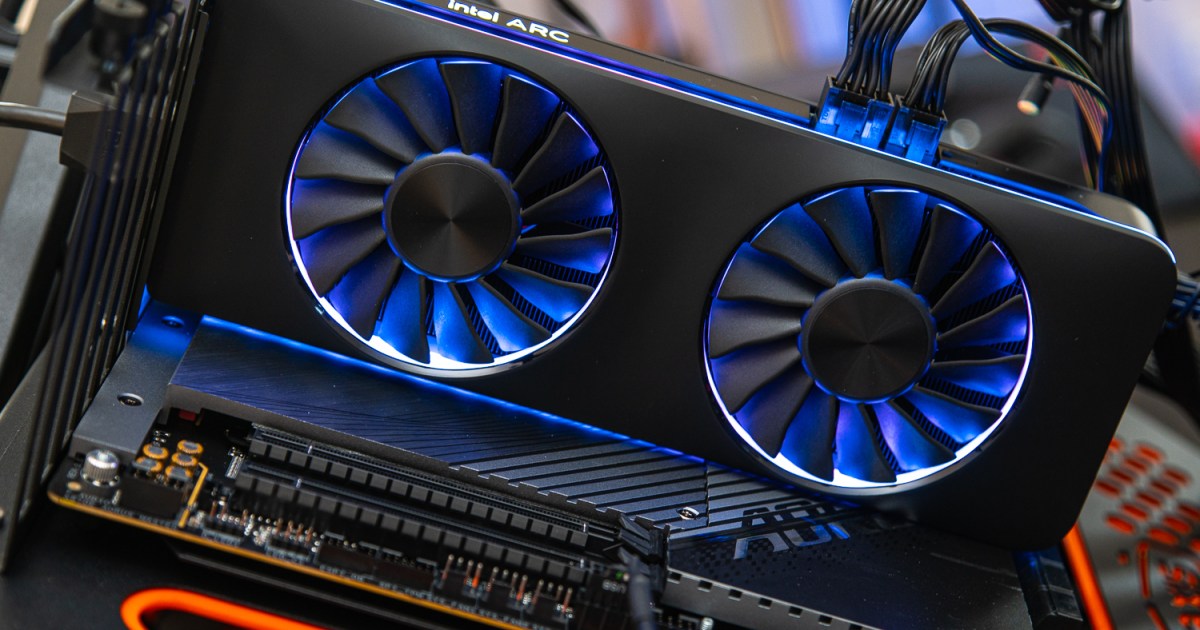
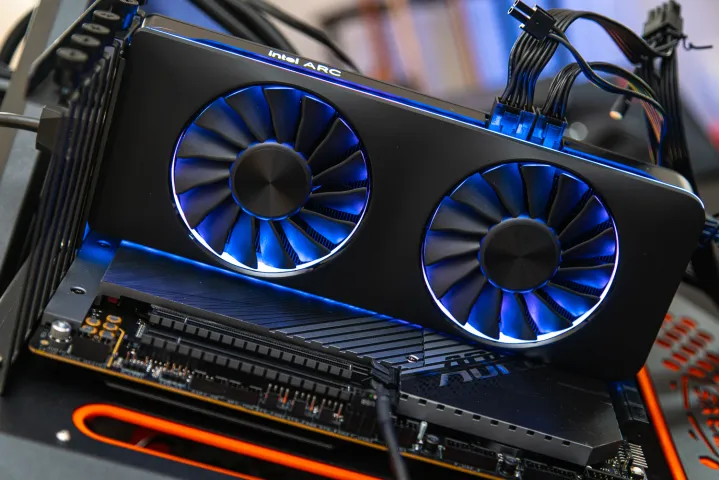 Jacob Roach / Digital Trends
Jacob Roach / Digital TrendsDespite a rocky start, Intel’s Arc GPUs are now among the best graphics cards you can buy. Targeting budget PC gamers, Intel has established itself as a major player in gaming graphics cards, and all eyes are on Team Blue with its next generation of GPUs, codenamed Battlemage.
We know Battlemage GPUs are coming, and Intel has slowly been dropping hints about the graphics cards over the past year. Although we’re still waiting on an official release date, specs, and pricing details for Battlemage GPUs, there’s a lot we can piece together already.
Intel Battlemage: specs
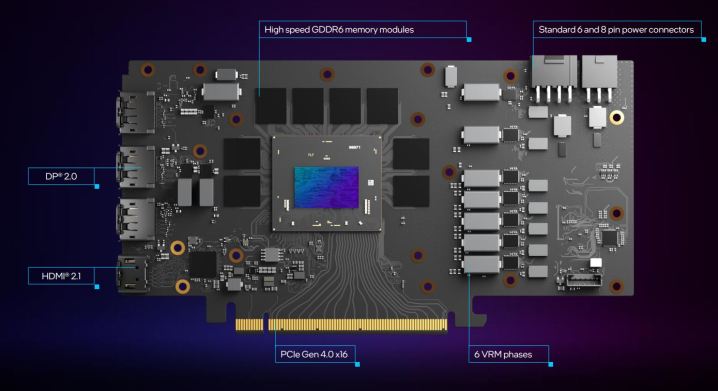 Intel
IntelIntel hasn’t confirmed any specs for its Battlemage GPUs yet, but the rumor mill hasn’t been quiet about the hardware these GPUs could pack. Originally, leakers like RedGamingTech claimed the flagship card would come with 64 Xe cores — double what’s available on the A770 we have now, and with an entirely new architecture in tow. At the beginning of the year, RedGamingTech revised their rumor, saying that the flagship GPU would come with 56 Xe cores. That’s still a massive bump over the A770. The latest speculation is a little bit different, however.
Frequent Twitter leaker Harukaze5719 found some shipping manifests that gave us some insight into the rumored specs of Intel Battlemage. According to the manifests, Battlemage will come in two flavors: X2 and X3. The X2 card is said to be the flagship, and the specs are drastically cut down compared to what RedGamingTech speculated on earlier this year.
BMG X2
BMG X3https://t.co/O5v3Tl1Wno pic.twitter.com/lr8uD3bCCz
— 포시포시 (@harukaze5719) June 29, 2024
The X2 card is said to come with 32 Xe2 cores, which translates to a (presumed) 4,096 stream processors (SPs) and 512 execution units (EUs). That’s exactly the same as Intel Arc A770, but the Battlemage architecture is also said to provide some improvements regardless of the number of EUs. The second card will reportedly sport 28 Xe2 cores (3,584 SPs and 448 EUs).
According to speculation, the so-called Battlemage GPU with 56 Xe2 cores was canceled. Intel appears to be adopting a similar strategy to AMD’s RDNA 4 in this generation by sticking to the budget part of the market. However, just a few months ago, the rumors were vastly different. Apart from the flagship card with much better specs, RedGamingTech used to claim that the card could reach clock speeds of up to 3GHz and would come with a massive 112MB of L2 cache.
What really stands out about the leak is the Adamantine cache, however. This is a form of cache that Intel has developed for CPUs, and it’s not dissimilar from AMD’s 3D V-Cache — basically, you stack a bunch of extra cache on the die. It’s what you’d call a “Level 4” cache. It’s slow by cache standards, but RedGamingTech says Intel plans on packing a massive 512MB of Adamantine cache on the flagship chip. However, if Intel chooses to stick to the entry-level card for a flagship, chances are that the Adamantine cache won’t be a thing in this generation, either. Mind you, this is speculation.
In addition to the model with 56 Xe Cores, the leakers used to say that a model with 40 Xe cores was in the works. This one seems a bit more grounded in reality, packing the aforementioned cores, a 192-bit memory bus, and none of the Adamantine cache. RedGamingTech speculated that this design might claim the flagship slot, citing the poor margins that could come from the 56 Xe core model.
As things stand now, we have vastly different accounts from different sources. While some leakers used to claim Intel would offer a huge spec uplift in Battlemage, those rumors have gone silent. Which GPU is real: the one with 56 Xe2 cores or the one with 32 Xe2 cores? It’s impossible to tell right now.
Intel Battlemage: pricing and release date
 Linus Tech Tips / Intel
Linus Tech Tips / IntelWe expected Battlemage cards to show up in the second half of 2024, but the timeline is growing uncertain as Intel is still yet to make any official announcements.
At the beginning of the year, Intel’s Tom Petersen said that engineers on the graphics team are working on software for the next-gen GPUs and that hardware engineers have already moved onto “the next thing.” Battlemage, on the hardware front at least, is ready to go. This was recently corroborated by DigiTimes, which reported (as shared by Gamers Nexus) that Battlemage production started in the first half of 2024.
Adding more evidence to this is a recent shipping manifest showing two Battlemage GPUs. The manifest notes that these cards are “for R&D purposes only,” but sending hardware around suggests Intel is entering the final stages of validation. In addition, Intel itself shared a slide with Japanese media outlets showing a new GPU launching in 2024.
Leakers don’t agree with this timeline, however. Leaker Moore’s Law is Dead cites Intel sources claiming that Battlemage is targeting a very late 2024 or early 2025 release. That’s despite an early road map shared last year that showed GPUs launching between April and June of 2024.
The latest leak lines up with this time frame. ComputerBase reported that Intel would launch the GPUs before Black Friday in preparation for the holiday season.
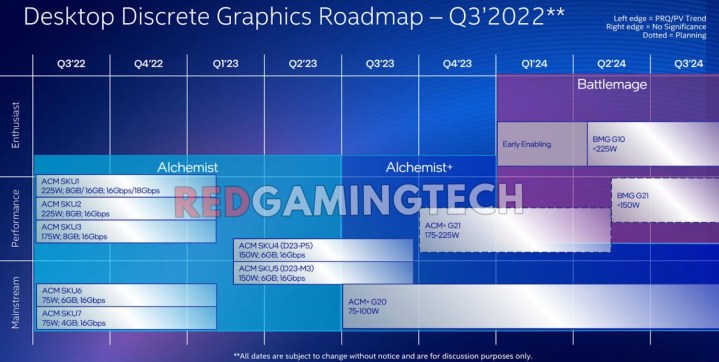 RedGamingTech
RedGamingTechAt this point, we’re waiting for Intel to share more. Intel stayed quiet on the matter of Battlemage during Computex 2024, so now we’re in limbo. Intel is also not alone in possibly skipping this year with a new GPU release — AMD and Nvidia are now also rumored to be waiting for early 2025 to launch their new graphics cards.
We won’t know anything about pricing until Intel has more to share. However, there’s a good chance Intel will focus on budget and midrange cards rather than expensive flagships like the RTX 4090. That’s what we saw with the Arc A770 and A750 in the previous generation. Intel’s stance with Arc since its inception has been valuable, and I don’t suspect it will abandon that idea with Battlemage.
Given the specs we know about, I suspect the flagship card will arrive around $500 — but this only applies if Intel goes ahead with the 56 Xe2-core model. That’s pure speculation right now, so don’t treat it any differently. Based on the specs, it appears Intel is designing a more powerful flagship with Battlemage that will likely command a higher price, and we’ve seen with GPUs like the RX 7900 GRE from AMD and the RTX 4070 from Nvidia how important this price bracket is.
Intel Battlemage: architecture
 Intel
IntelIntel calls the architecture behind Battlemage Xe2, following up on the Xe architecture we saw with Alchemist graphics cards. Leakers have shared a few details about what this next-generation architecture will entail, but we’re light on concrete details.
For starters, there’s a good chance Intel will stick with semiconductor manufacturer TSMC for Battlemage. We don’t know what node Intel will use, but rumor has it that Battlemage will use the N4 node. There are multiple variations of this node, some of which are being used in Nvidia’s next-gen data center GPUs named Blackwell, so it’s not clear if Intel will stick with a vanilla version or not. A recent DigiTimes report said that Intel will indeed use a TSMC 4nm node.
For Battlemage, Intel says it’s simplifying its lineup. With the first Xe architecture, Intel built it to scale from low-power laptops up to data center GPUs. Intel’s Tom Petersen says that Xe2 will have a more streamlined lineup. You’ll get Xe2-LPG for lower-power applications, and Xe2-HPG for high-performance discrete GPUs.
 RedGamingTech
RedGamingTechAccording to a leaked internal slide, shared by RedGamingTech, Xe2-HPG will feature a “next-gen memory subsystem and compression,” as well as improved ray tracing and micro-architectural improvements. That first note stands out. Last year, Intel published a research paper detailing AI-driven compression to get around VRAM issues in modern games. We could see that tech leveraged as part of the architecture of Battlemage.
Intel Battlemage: performance
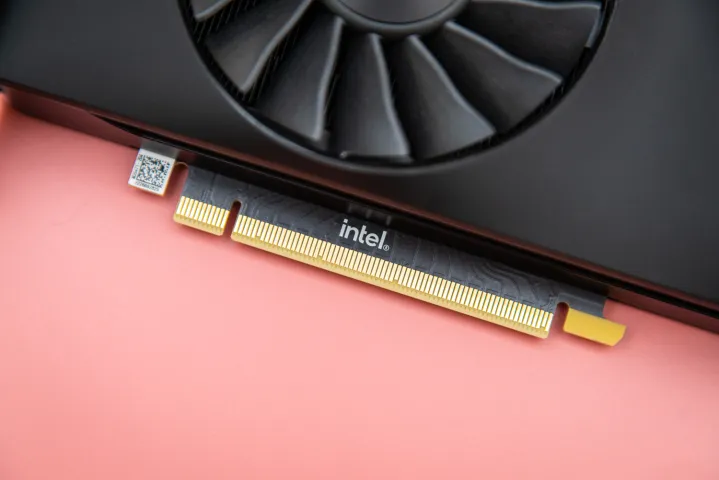 Jacob Roach / Digital Trends
Jacob Roach / Digital TrendsWe don’t know about Battlemage’s performance, and the few leaks that have come out don’t provide any hints. Intel has confirmed it’s working on software for Battlemage now, and we saw how important that was in the previous generation. We won’t get an accurate picture of performance until the cards are actually here.
Based on the specs, there’s a good chance Intel is targeting the RTX 4070 with its flagship Battlemage GPU. That’s probably a good call, too. There are half a dozen GPUs in the price bracket between $400 and $600, making it the most competitive part of the graphics card market right now. However, if Intel only releases a GPU with 32 Xe2 cores, the RTX 4070 might still outperform its flagship. It’s impossible to know right now.
Originally, rumors claimed Intel would target the RTX 4080 for its flagship card, but that seems unlikely. This rumor likely spread due to the size of the actual GPU inside the flagship card, which is rumored to be around the same size as the RTX 4080. That may be true, but that doesn’t mean the card will be able to reach the levels of the RTX 4080. Intel may pack more hardware in the cards than it needs, similar to Alchemist GPUs.
Lower down the stack, it’s hard to say. All we have now is a leaked SiSoftware benchmark showcasing Battlemage in Intel’s Lunar Lake laptop CPUs. Regardless, Intel likely won’t compete with the next generation of GPUs from AMD and Nvidia. Based on the timeline we have now, it seems Intel is trying to get a few months on the market before AMD and Nvidia release their next-gen graphics cards — but even that seems uncertain.
Intel’s big claim at the moment is that Battlemage delivers a 50% improvement compared to the previous architecture. That’s inside of Lunar Lake chips, so it remains to be seen if Intel can deliver the same improvement with its desktop graphics cards.
As things stand now, rumor has it that discrete Battlemage GPUs may never make it to laptops, so Lunar Lake Battlemage is all that laptop users may ever see. However, until Intel itself says more on the matter, all of the above is uncertain.

 Hollif
Hollif 































